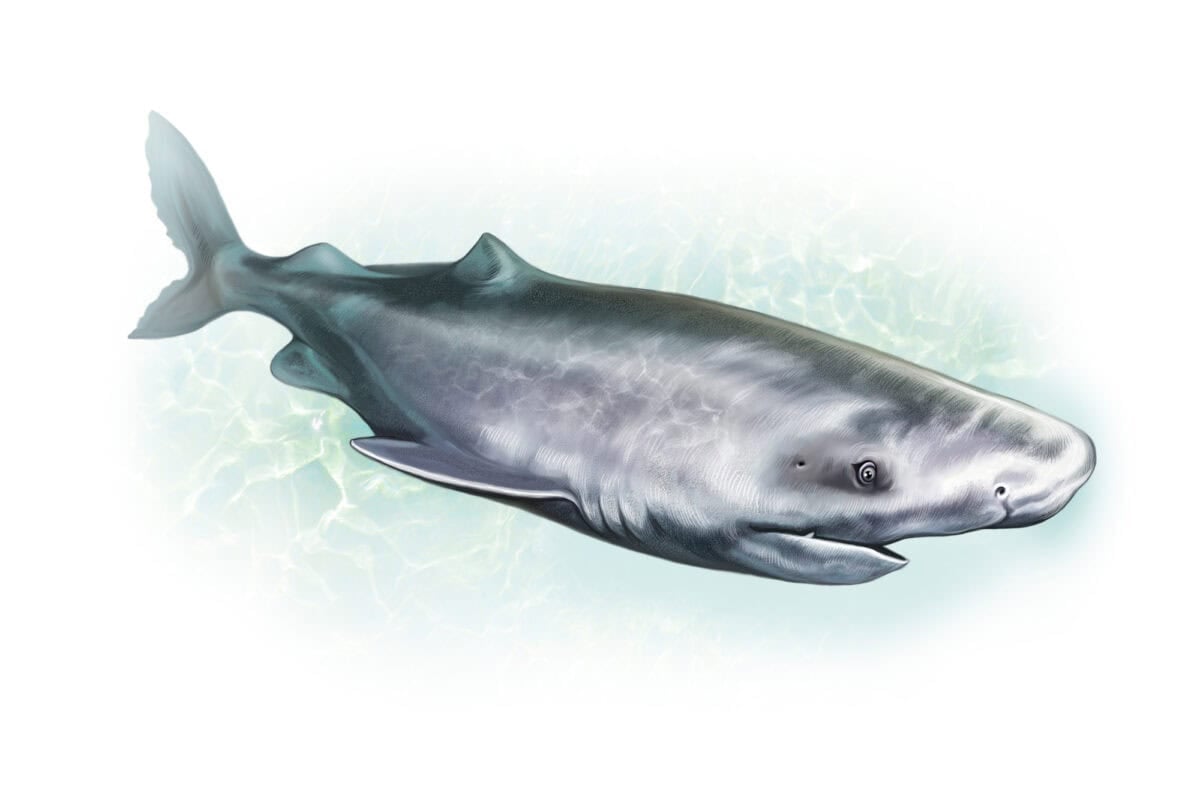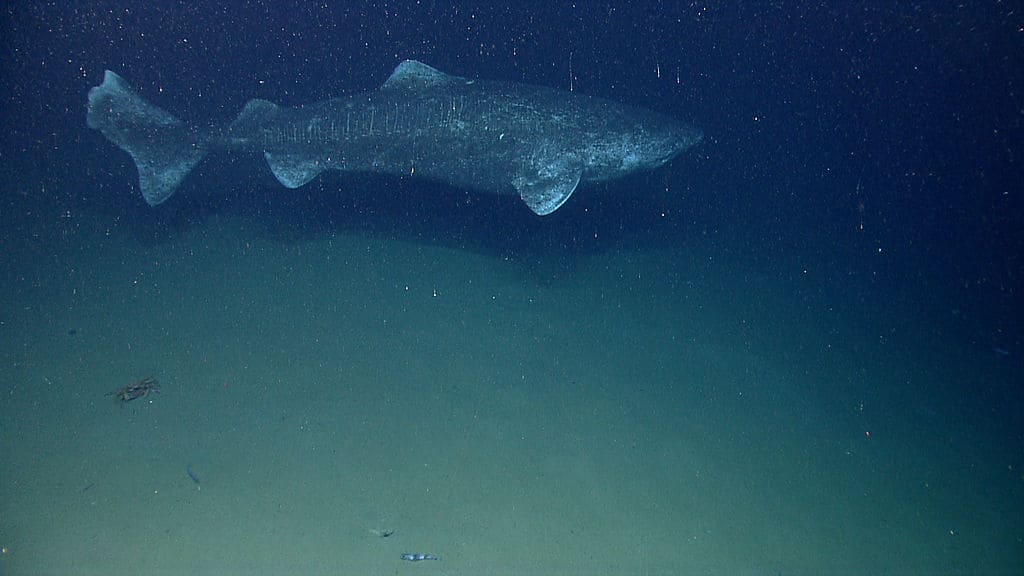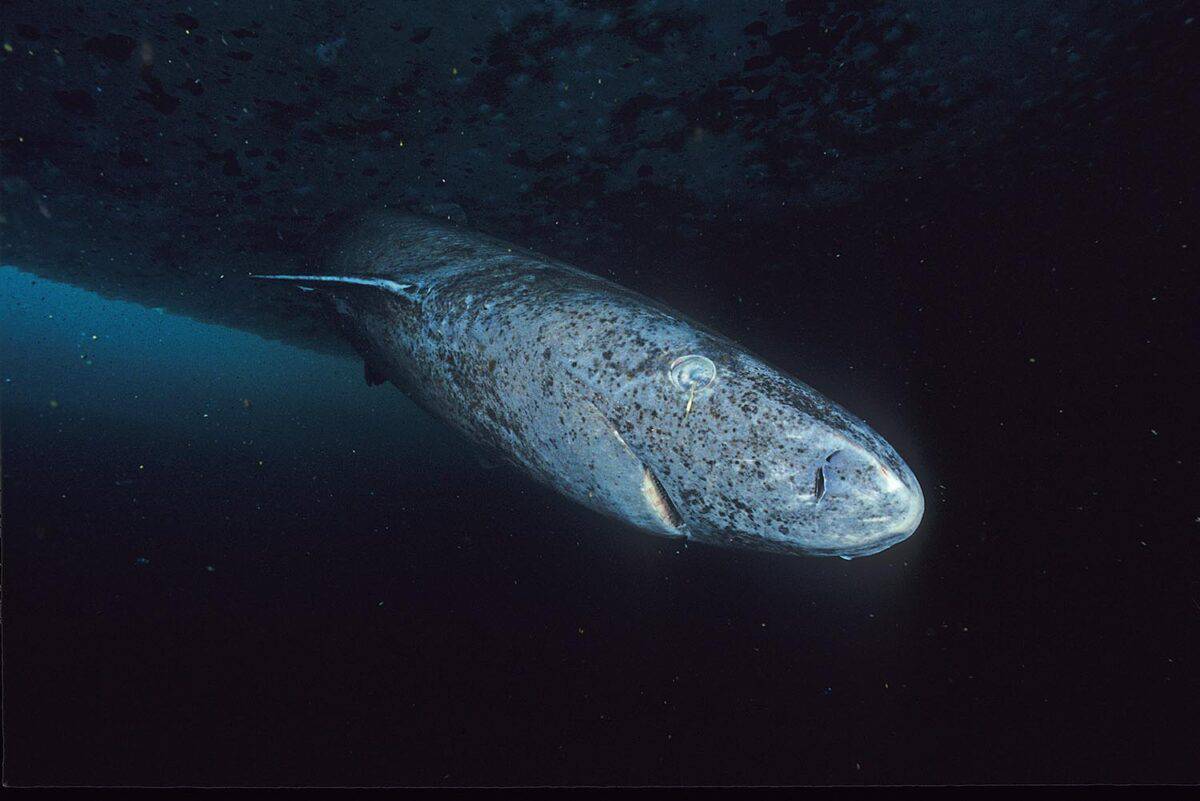In the frigid, dark depths of the North Atlantic Ocean swims a true living fossil—the Greenland shark (Somniosus microcephalus). This remarkable creature holds the distinction of being the longest-living vertebrate known to science, with some individuals reaching ages exceeding 500 years. Their incredible longevity, mysterious lifestyle, and the harsh, remote environments they inhabit have made these sharks subjects of fascination for scientists and nature enthusiasts alike. This article explores the extraordinary Greenland shark, its record-breaking lifespan, and the cold, deep waters where researchers have found these ancient mariners.
The Ancient Mariners of the Deep

The Greenland shark represents a biological wonder that challenges our understanding of vertebrate longevity. These sharks don’t just live for decades or even a century—they can survive for multiple centuries, with the oldest documented individual estimated to be approximately 512 years old when discovered. This makes them not only the longest-living shark species but also the longest-living vertebrate on Earth, far outpacing even the most ancient tortoises or whales. Their exceptional lifespan means some living Greenland sharks may have been swimming the oceans when Galileo was still gazing at the stars, when Shakespeare was penning his sonnets, and when the first European settlers arrived in North America.
The Scientific Breakthrough: Dating Ancient Sharks

The discovery of the Greenland shark’s extraordinary lifespan came in 2016 when researchers from the University of Copenhagen published their groundbreaking findings in the journal Science. The scientific team, led by marine biologist Julius Nielsen, developed an innovative method to determine these sharks’ ages. Traditional aging methods, such as counting growth rings in vertebrae (similar to tree rings), don’t work with Greenland sharks because their cartilaginous skeletons lack the hard, calcified tissue that forms these rings. Instead, researchers used radiocarbon dating on the lenses of the sharks’ eyes. The eye lens contains proteins that form during prenatal development and remain unchanged throughout the animal’s life—essentially providing a time capsule dating back to the shark’s birth.
Arctic Habitat: Where These Methuselahs Roam

Greenland sharks primarily inhabit the North Atlantic Ocean and Arctic Ocean, with particularly strong populations around Greenland and Iceland—hence their common name. They are true denizens of the deep, typically living at depths between 600 and 2,400 feet (180 to 730 meters), though they have been documented at astonishing depths exceeding 7,200 feet (2,200 meters). These cold-water specialists prefer water temperatures between -1.8°C and 10°C (29°F and 50°F), and they possess specialized adaptations that allow them to thrive in near-freezing waters. Their preferred habitat aligns perfectly with their slow metabolism and extraordinary longevity—the cold, stable environment of the deep ocean creates ideal conditions for their extremely slow-paced life cycle.
Physical Characteristics of the Living Fossil

Greenland sharks are imposing creatures, ranking among the largest shark species. They typically grow to lengths of 12-16 feet (3.7-4.9 meters), with exceptional specimens reaching up to 24 feet (7.3 meters) and weighing as much as 2,200 pounds (1,000 kg). Their bodies are cylindrical and robust, with relatively small fins for their size. Unlike more familiar shark species, Greenland sharks have a distinctively sluggish appearance, with mottled gray to brown skin often covered with parasites. Their most notable feature may be their eyes—which frequently host copepod parasites called Ommatokoita elongata. These parasites attach to the cornea and leave the sharks partially blind, though this seems to cause minimal impairment to these slow-moving predators who rely more on smell than sight for hunting.
The Secret to Extreme Longevity

What allows Greenland sharks to achieve such extraordinary lifespans remains one of biology’s most intriguing questions. Scientists believe several factors contribute to their longevity. First, their habitat in deep, cold waters naturally slows their metabolism to an extreme degree. With body temperatures hovering just above freezing, all biological processes—from cellular division to tissue repair—occur at a glacial pace. Second, they grow exceedingly slowly, reaching sexual maturity only after 150 years of life. This slow growth is connected to their remarkably slow swimming speed of about 0.76 mph (0.34 m/s), requiring minimal energy expenditure. Finally, researchers suspect these sharks may possess unique cellular mechanisms to prevent or repair DNA damage that typically accumulates with age, though these specific adaptations remain under investigation.
Hunting in Slow Motion: Feeding Habits

Despite their lethargic appearance and extremely slow swimming speed, Greenland sharks are apex predators in their ecosystem. Their hunting strategy relies not on speed but on stealth and opportunity. Moving almost imperceptibly through the dark waters, they ambush sleeping seals or scavenge on carrion that sinks to the ocean floor. Their diet is remarkably diverse, including fish, seals, reindeer, polar bears, moose, and even horses—evidence that they’ll opportunistically eat almost anything they encounter. Stomach content analyses have revealed everything from fish and marine mammals to terrestrial animals and even sections of fishing equipment. Scientists believe they may be active scavengers of marine mammal carcasses that sink to the ocean floor, sometimes called “whale falls,” which provide enormous food resources in the nutrient-poor deep sea.
Reproduction: The Slowest of Slow Breeders

The reproductive strategy of Greenland sharks perfectly complements their extreme longevity. These sharks are among the slowest-maturing vertebrates on Earth, with females not reaching sexual maturity until they’re approximately 150 years old. Like most sharks, they are ovoviviparous, meaning the eggs develop inside the mother’s body, and she gives birth to live young. A single female can carry up to 10 pups in a pregnancy, though the gestation period remains unknown but is suspected to be exceptionally long—possibly several years. This extremely delayed maturity and slow reproductive rate makes them particularly vulnerable to population threats, as any recovery from population decline would take centuries rather than decades.
Discovery and Historical Knowledge

While indigenous Arctic peoples have known about Greenland sharks for countless generations, scientific documentation of the species dates back to the 1770s when Danish zoologist Otto Fabricius first described them. For centuries, these sharks were primarily known to Greenlandic Inuit and Icelandic fishermen, who developed traditional practices for catching and processing them.
The Inuit have historically harvested these sharks for their meat and liver oil, though their flesh contains high levels of trimethylamine N-oxide (TMAO), making it toxic unless processed through specific traditional fermentation or drying methods. This processing results in an Icelandic delicacy called hákarl, though its ammonia-rich scent and distinctive flavor make it an acquired taste even for culinary adventurers.
Tracking the Untraceable: Research Challenges

Studying Greenland sharks presents extraordinary challenges for marine biologists. Their remote, frigid habitat makes direct observation difficult and expensive, often requiring specialized submersibles or remote-operated vehicles. Their deep-water lifestyle keeps them far from casual observation, and their slow movement makes tracking their behavior particularly challenging.
Until recently, most scientific knowledge came from specimens accidentally caught in fishing operations rather than dedicated research expeditions. Modern research increasingly employs satellite tags, underwater cameras, and environmental DNA (eDNA) sampling to study these elusive creatures without disturbing them. These non-invasive techniques are particularly important given the sharks’ conservation status and exceptionally slow recovery potential.
Conservation Status and Threats

The International Union for Conservation of Nature (IUCN) currently lists the Greenland shark as “Vulnerable” on its Red List of Threatened Species. Their extreme longevity and slow reproduction rate make them particularly susceptible to population depletion. Historically, these sharks were heavily fished for their liver oil, which was used in lamps and industrial applications before petroleum products became widely available.
While directed fisheries have largely ceased, bycatch in commercial fisheries remains a significant threat. As bottom trawling extends into deeper waters, incidental capture of Greenland sharks increases. Climate change also poses a potential threat, as warming ocean temperatures may reduce suitable habitat for these cold-water specialists. Ocean acidification and pollution present additional stressors to a species that evolved in a previously stable environment.
Scientific Significance Beyond Longevity

Beyond their record-breaking age, Greenland sharks hold significant value for multiple scientific disciplines. Geneticists study their DNA for insights into mechanisms that prevent cellular aging and cancer—information potentially valuable for human medicine. Ecologists value them as indicator species for deep-sea ecosystem health, while climate scientists analyze the chemical composition of their tissues to understand historical ocean conditions.
Their extraordinary adaptation to extreme environments makes them fascinating subjects for physiological research. Additionally, as top predators with potential lifespans exceeding five centuries, they serve as living records of ocean health across multiple human generations, potentially revealing long-term patterns invisible to shorter-term studies.
Recent Discoveries and Expanding Range

While traditionally considered Arctic specialists, recent research has revealed Greenland sharks in unexpected locations. In 2020, researchers documented these sharks in the waters of Belize, thousands of miles south of their previously known range, suggesting they may inhabit tropical deep waters worldwide. Scientists have also recently discovered them in the St. Lawrence Estuary in Canada and in waters around the United Kingdom.
These findings suggest a much wider global distribution than previously understood, possibly inhabiting deep, cold waters in many of the world’s oceans. The expansion of their known range has led to a fundamental reassessment of their ecological role and environmental requirements, highlighting how much remains unknown about these ancient mariners despite centuries of occasional encounters.
Living Witnesses to History

The extraordinary lifespan of Greenland sharks means that many individuals swimming in today’s oceans have lived through remarkable periods of human history. The oldest documented specimen, estimated at over 500 years old, would have been born around the early 1500s—when Leonardo da Vinci was still alive, when Michelangelo was painting the Sistine Chapel, and before Shakespeare was born.
These living creatures have silently witnessed the entire Scientific Revolution, the Industrial Revolution, both World Wars, and the digital age—all while slowly patrolling the same cold, dark waters. This perspective makes them not just biological marvels but also living historical artifacts, connecting our modern world to centuries past in a way few other living things can claim.
Conclusion: Guardians of Deep Time

The Greenland shark stands as one of nature’s most profound mysteries—a creature that defies our understanding of vertebrate longevity and reminds us how much remains unknown in Earth’s oceans. Their ability to live for centuries in the harshest marine environments represents one of evolution’s most remarkable achievements, creating animals that measure their lives not in years or decades, but in centuries. As we continue to study these ancient mariners, they offer unique opportunities to understand aging, adaptation, and survival across timescales that exceed human experience. In a world increasingly defined by rapid change, the Greenland shark embodies nature’s alternative path—one of patience, persistence, and the quiet endurance that comes with moving through the world at nature’s slowest pace.
- Photosynthesis vs Respiration: How Animals Rely on Plants and Oxygen - June 28, 2025
- The Most Gorgeous Horse Breeds Galloping Across California Ranches - June 28, 2025
- The Brave Pigeon That Saved 194 Soldiers - June 27, 2025

